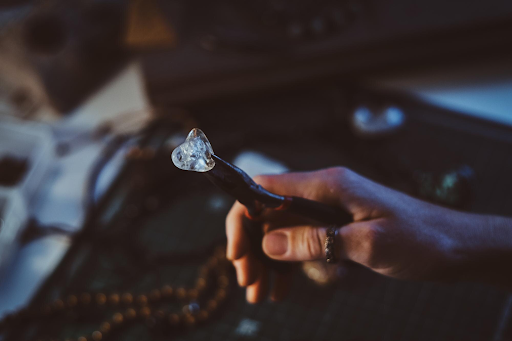The natural diamond industry is undergoing one of the most dramatic shifts in recent memory. Prices of mined diamonds, especially in the lower and mid grades, are under intense downward pressure in 2025. What once seemed like a timeless store of value is being challenged by changes in supply, demand, technology, and consumer preferences. In this article we examine the key reasons behind the price collapse, look at data trends, and explore what this means for miners, dealers, and consumers going forward.
The 2025 Picture: Price Trends and Data Signals
Before we dig into causes, it helps to see where the market stands in 2025:
- According to PriceScope’s February 2025 report, certain lower grade natural diamonds such as J SI1 or K SI2 categories have seen sharp declines. For example, a J SI1 dropped from about USD 2,641 in January to USD 2,357 in February.
- The RapNet Diamond Index reports that in June 2025, actual sale prices for one carat natural diamonds fell by 0.3 percent, while 0.5 carat stones saw larger drops of 2.3 percent.
- The IDEX list price index showed a steep increase in asking prices of 4.83 percent in one period, illustrating the gulf between what sellers hope to get and what buyers are willing to pay.
- On the rough diamond side, the Zimnisky Global Rough Diamond Price Index shows rough diamond prices down one to two percent year to date by mid 2025, following declines of 18 percent in 2024 and 15 percent in 2023.
- Analysts report that rough mined diamond prices have dropped roughly 34 percent from their peak in 2022 to late 2024.
- Media coverage notes that natural diamond prices in retail shops have declined about 26 percent compared to two years prior.
These data points confirm a broad weakening not just in one niche, but across many sizes and grades. Now let us turn to why this is happening.
Root Causes of the Price Collapse
1. Competition from Lab Grown Diamonds
One of the most disruptive forces at work is the competition from lab grown diamonds. These stones are chemically, optically, and physically equivalent to mined diamonds, yet they can be produced more predictably and often at a much lower cost per carat. As lab grown technology improves and scales, their prices have fallen steeply, which has in turn undercut demand for natural diamonds, particularly in the lower and mid quality ranges where substitution is strongest.
Buyers who might once have purchased a modest natural diamond are increasingly choosing lab grown alternatives that offer similar appearance at a fraction of the cost. Because of this substitution, retailers and wholesalers are forced to lower natural diamond prices to stay competitive. The more that lab grown stones encroach into mainstream jewelry segments, the more squeezed the natural segment becomes.
2. Overhangs in Supply, Inventory, and Unsold Stock
Mining companies and diamond houses have accumulated significant inventories of natural diamonds that they are struggling to sell. De Beers, a major player in the sector, reportedly held billions of dollars of unsold diamond inventory in 2025.
When supply outpaces demand and inventories accumulate, sellers are forced to discount to move stock. This dynamic creates a vicious cycle. Discounts reduce perceived value, which reduces buyer willingness to pay, which further depresses prices.
Also, some producers have maintained higher rough inventory levels relative to demand expectations, which fuels further downward pressure.
3. Weak Consumer Demand, Especially in Key Markets
Natural diamonds are often purchased as luxury goods for engagement rings, fashion jewelry, and heirlooms. These demand segments are sensitive to economic conditions, consumer confidence, and changing priorities.
In 2025, demand in key markets such as the United States, China, and even Western Europe is showing signs of softness. Inflation, high interest rates, and uncertain macroeconomic outlooks have made luxury spending more cautious. Some buyers are postponing big purchases or opting for less expensive alternatives. This softness affects especially the mid tier goods, pulling down prices.
Further, demographic changes and evolving values among younger buyers play a role. Millennials and Gen Z consumers often prize ethical, sustainable, and cost efficient options. Many of them see less value in paying heavy premiums for natural diamonds when alternatives exist.
4. Declines in Mining Output and Rough Diamond Cuts
Paradoxically, lower supply alone cannot rescue natural diamond prices when demand is soft. In 2025, many major producers have cut back rough output projections in part because of falling prices and lower profitability in extraction.
But cuts in supply are often too late and too modest to offset the magnitude of demand weakness and the substitution effect. While supply contraction can help stabilize prices if demand is steady, in 2025 demand is not steady, and so the price slide continues.
Additionally, global rough diamond production in 2025 is expected to fall to around 105 million carats, one of the lowest levels since the mid 1990s. Although lower production might reduce pressure in the long term, the immediate effect is limited unless matched by robust demand.
5. The Premium Gap and Perceived Value Deterioration
Natural diamonds have historically commanded large premiums for the natural origin, branding, perceived rarity, and prestige. But as lab grown alternatives become more acceptable in aesthetics, many buyers question whether the premium of a natural stone is justified.
When those premiums shrink, perceptions of value shift. Buyers become more selective and avoid paying inflated margins for natural diamonds over alternatives. Retailers then feel pressure to offer steeper discounts to convince cautious buyers.
In short, the narrative that natural diamonds are inherently better or more valuable is under challenge when pricing diverges sharply and consumers do side by side comparisons.
6. Market Structures, Forward Contracts, and Pricing Indexes
The diamond trade is complex, involving forward contracts, pricing indexes, and wholesale versus retail segmentation. Some producers and traders use forward sales to hedge prices, which can lead to forced discounts if real demand falls short of expectations.
Rapaport, IDEX, and other price lists and indices play a role in anchoring expectations. When index prices are lowered or listing discounts widen, many traders use that as justification for deeper markdowns on inventory.
Moreover, the gap between list price and transaction price is widening, reflecting buyer skepticism and seller desperation in many cases.
7. Geopolitics, Trade Policy, and Tariff Pressures
Trade policies, sanctions, tariffs, and geopolitical tensions can influence the diamond trade. For example, in some periods, reciprocal tariffs or proposed import duties create uncertainty in pricing and prompt buyers to delay purchases or renegotiate pricing.
In such scenarios, sellers often preemptively discount inventory or reduce prices to stimulate demand or mitigate risk. While not the root cause, policy shocks amplify existing downward pressures.
Why Some Segments Resist the Decline
While many segments of the natural diamond market are under severe strain, not all feel the same pain. Some categories are more resilient:
- Premium rarities: High color grades such as D, E, F, flawless or internally flawless clarity, very large carats, or rare fancy colored natural diamonds hold value better because their rarity insulates them from substitution.
- Branded and certified stones: Stones with strong provenance, recognized brand associations, or exceptional certification sometimes carry a halo premium that resists downward drift more than generic inventory.
- Legacy and emotional purchases: Some buyers choose natural diamonds for emotional, heritage, or symbolic reasons and are less price sensitive.
Thus, the crash is not uniform. Pressure is far more acute in the lower and middle tiers, while the top shelf retains more stability.
Implications of the Price Crash in 2025
For Mining Companies and Producers
The price decline threatens profitability. Many miners must cut capital expenditure, delay or cancel projects, and inventory buildup becomes a liability. Some may even write down asset values, as we have already seen with De Beers.
In the longer run, some mines may close, and new exploration may slow. Over time this could reduce future supply, but that depends on whether demand recovers enough to absorb less supply.
For Dealers, Polishing Houses, and Traders
Dealers and wholesalers will face margin compression. They will need to restructure cost bases, reduce risk, and perhaps pivot more toward lab grown or hybrid offerings. Polishing houses will likely see lower throughput, more competition, and pressure to optimize yield and reduce waste.
Traders will need to manage inventory risk more carefully. Holding large stock in a falling market is risky. Some may sell early at discount before losses deepen.
For Retailers and Jewelry Brands
Retailers will be squeezed between supplier costs, consumer expectations, and alternative competition. Many will need to rethink their product mix, offering both natural and lab grown options side by side, offering buyback or upgrade programs, and clearly communicating value to customers.
Retailers may also promote natural diamonds more as luxury, heritage, or collectible objects rather than commoditized stones in order to maintain margins and distinction.
For Consumers and Investors
For consumers, this is generally good news for now. Falling natural diamond prices make it more affordable to buy higher quality stones or larger carats. But this also means that the notion of natural diamonds as a stable investment is more precarious.
Many consumers who purchased natural diamond jewelry years ago may find that their stones have depreciated, especially in lower grades. That has implications for resale value, insurance, and perceived worth.
For investors, the instability and structural shifts mean that treating natural diamonds as a store of value or hedge instrument is becoming riskier. The price collapse is partly structural, not simply cyclical, so recovery is uncertain.
Will Natural Diamond Prices Recover
One key question is whether natural diamond prices will bounce back after this crash, or whether the decline is structural and long lasting.
Industry watchers speculate that a stabilization is possible if demand revives, if promotional efforts succeed in rebranding the uniqueness of natural stones, and if supply is constrained.
But such a recovery is not guaranteed. The following factors determine the likelihood:
- Consumer sentiment: Will buyers again value natural stones over alternatives, or will substitution become entrenched
- Marketing and brand differentiation: The natural diamond industry must reemphasize uniqueness, origin, ethics, and emotional value to justify premium pricing
- Supply discipline and inventory control: If producers strictly limit supply and avoid oversaturation, that may help
- Macroeconomic tailwinds: Growth in key markets, rising disposable incomes, revived luxury spending, and stable interest rates would help
- Scarcity of top tier stones: The truly rare and high quality natural stones may preserve or recover value even if the broader base remains under pressure
Some analysts believe that recovery may be slow and partial. The structural challenge posed by lab grown alternatives is substantial, and natural diamonds may find a niche premium role rather than dominating mass markets.
A Real World Indicator: India’s Export Decline
India is one of the world’s largest centers of diamond cutting and polishing. In 2024 to 2025 India’s polished diamond exports fell to their lowest level in nearly two decades, down 16.8 percent year on year to USD 13.3 billion.
This drop in exports underscores falling global demand for natural cut and polished diamonds. Lower export volumes coupled with falling realized prices show how the crash is not just in domestic markets but in global trade flows.
Conclusions: A Structural Shift, Not a Blip
The natural diamond price crash in 2025 reflects more than a temporary downturn. It reveals a structural rebalancing in the diamond industry. The key factors driving it include substitution pressures from lab grown diamonds, inventory overhang, weak consumer demand, and shrinking pricing power for natural stones.
While the most severe effects hit lower and mid grades, even premium segments must adapt. This is not just a crisis for miners or retailers, it is a redefinition of how diamonds will be valued, marketed, and bought in the decades ahead.
For stakeholders including miners, traders, retailers, and buyers, understanding these forces is essential. Strategies must adapt: more disciplined supply, stronger branding, dual product offerings of natural and lab grown, and careful inventory management. Consumers meanwhile are in a unique window where value can be captured, but must also recognize the changing nature of what once seemed eternal.


